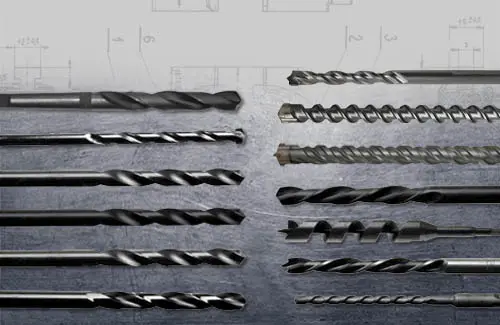The regular price is the current manufacturer's recommended price! FREE shipping for orders over EUR 41,67 within CZ+SK (PPLparcel)

Currently, the range of drills is really wide. The basic criterion when choosing a drill is the material into which we will drill - for example, metal, wood, bricks or concrete. But that alone is not enough. So what are the other criteria when choosing the best drill?
1. Quality, not quantity
It is definitely not worth saving on choosing a drill, poor-quality drills soon become dull, do not remove the drilled material well and oscillate during drilling, which creates a hole that is too large. Our drills are characterized by very good quality, which is evidenced by the fact that we pay great attention to product inspection - our drills undergo 100% inspection - both visual and measured with high-quality measuring devices.
2. Number of cutting edges
Standard drill bits are double-edged, but you can also find three-edged and four-edged drill bits in the offer. Double-edged drill bits drill faster, but they cannot be used in all circumstances. For example, four-edged drill bits for building materials (concrete, bricks, tiles, glass or roofing) will not jam or break on reinforced concrete (reinforced concrete), but they drill more slowly than regular drill bits. Very good drilling results can be obtained with double-edged and four-edged drill bits with SDS-plus clamping, which are designed for impact drills or four-edged SDS-Max drill bits for large rotary hammers. If you are going to drill into several materials at once, universal drill bits are a great choice that can drill concrete, stone, glass, ceramics, wood and many other materials.
3. HSS-G or HSS-E - what is the difference?
HSS twist drills for iron are divided into several groups/abbreviations. The abbreviation HSS stands for "High Speed Steel", i.e. high-speed steel, which is steel that is many times better than regular tool steel. As the name suggests, its speed is 3-4 times faster. It also has more stable properties at high temperatures (500°C and more), which is mainly due to the fact that it belongs to alloyed steels - with an admixture of other substances - mainly tungsten, molybdenum, chromium and vanadium, and for the highest performance also cobalt.
Basic classification of HSS drills and their use:
a) HSS-R (Rolled) – black color, produced by hot forming and their surface is treated by blackening, used in applications where the requirements for the accuracy of the drilled hole are not extremely high
b) HSS-G (Ground) – shiny silvery appearance, produced by grinding on automatic machines, while the cutting edges and the surface of the drill are also ground, they are much more precise than HSS-R drills and can handle even higher strength steel
c) HSS-TiN / HSS-TiAlN (Titanium / Titanium alloyed with aluminum) – gold color, in principle it is an HSS-G drill with a titanium nitride surface treatment, the titanium coating increases the hardness and durability of the drill
d) HSS-E or HSS-Co (Cobalt) – silver or bronze color, contain an admixture of cobalt (5% or 8%), they cope well with high temperatures and wear out little, they are the TOP among iron drills, they can also drill stainless steel well, due to their high hardness they have a greater tendency to break, so they are not suitable for hand drilling
But it doesn't end with choosing a drill. We must also remember that we must adhere to optimal cutting conditions, especially maintaining speed /speeds/, choosing hammer or non-hammer drilling and, in the case of drilling into metal, also use cooling.
Other articles:
Jak a čím vrtat do betonu?
Užití stupňovitých vrtáků
Jaké jsou druhy vrtačkových sklíčidel?
Co je středící vrták?